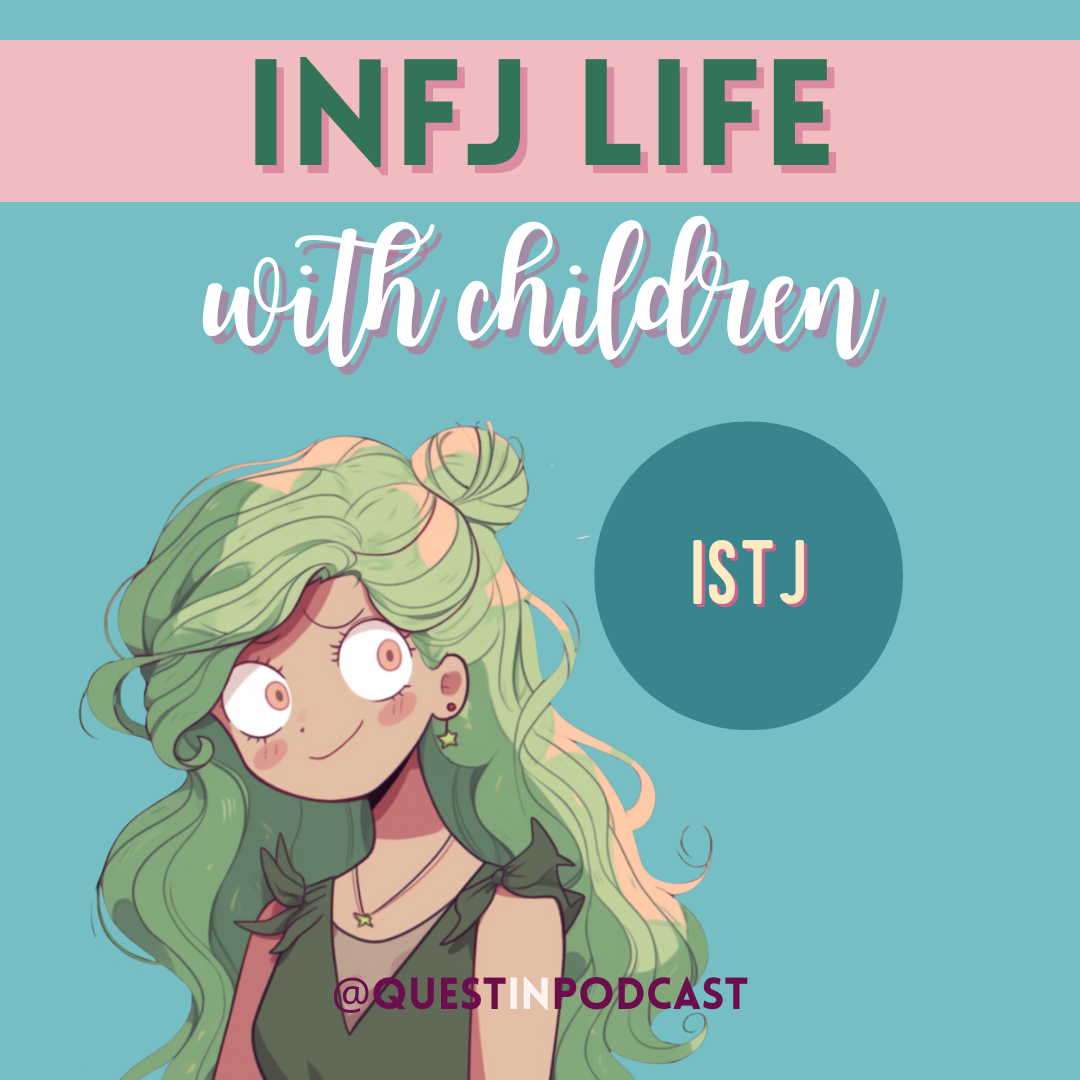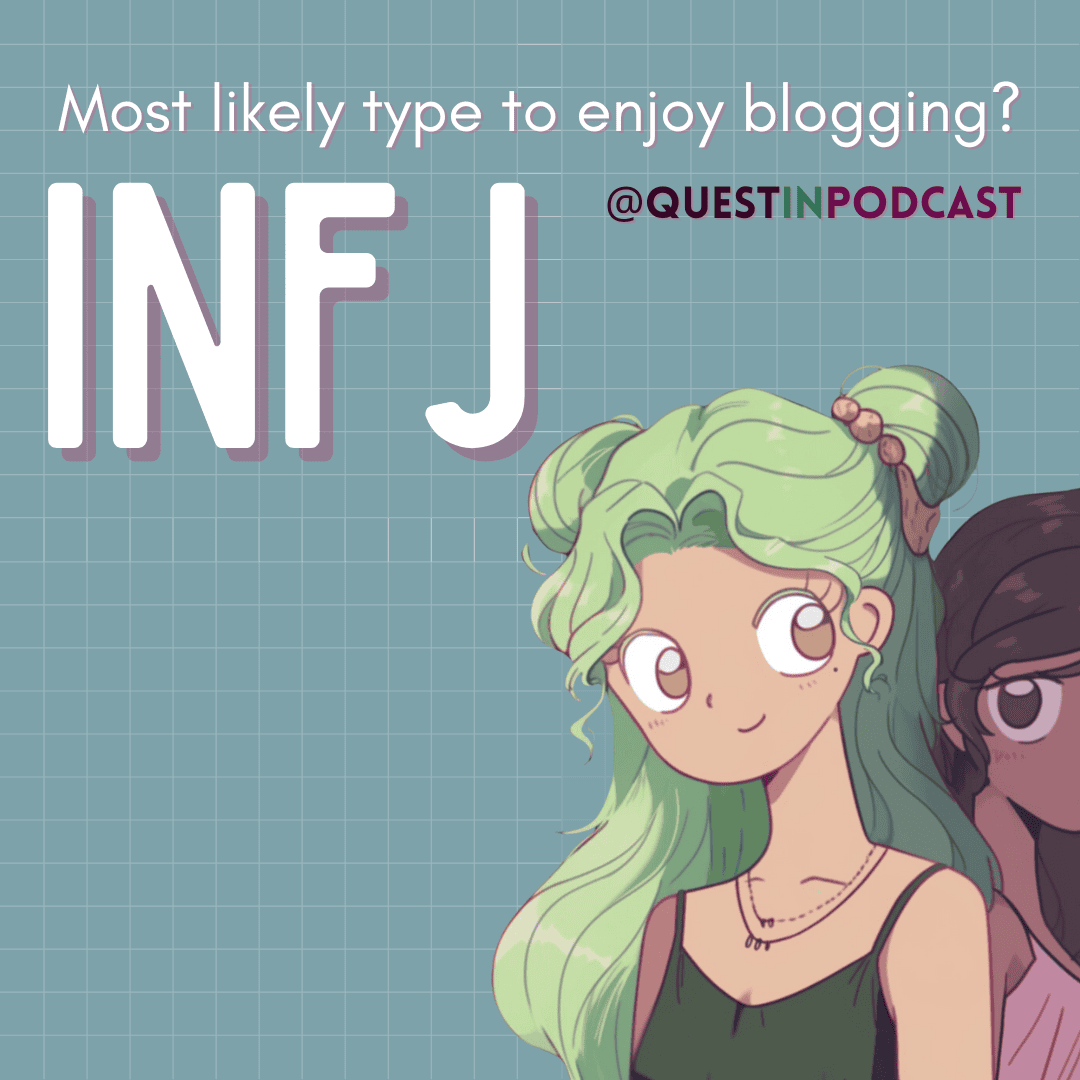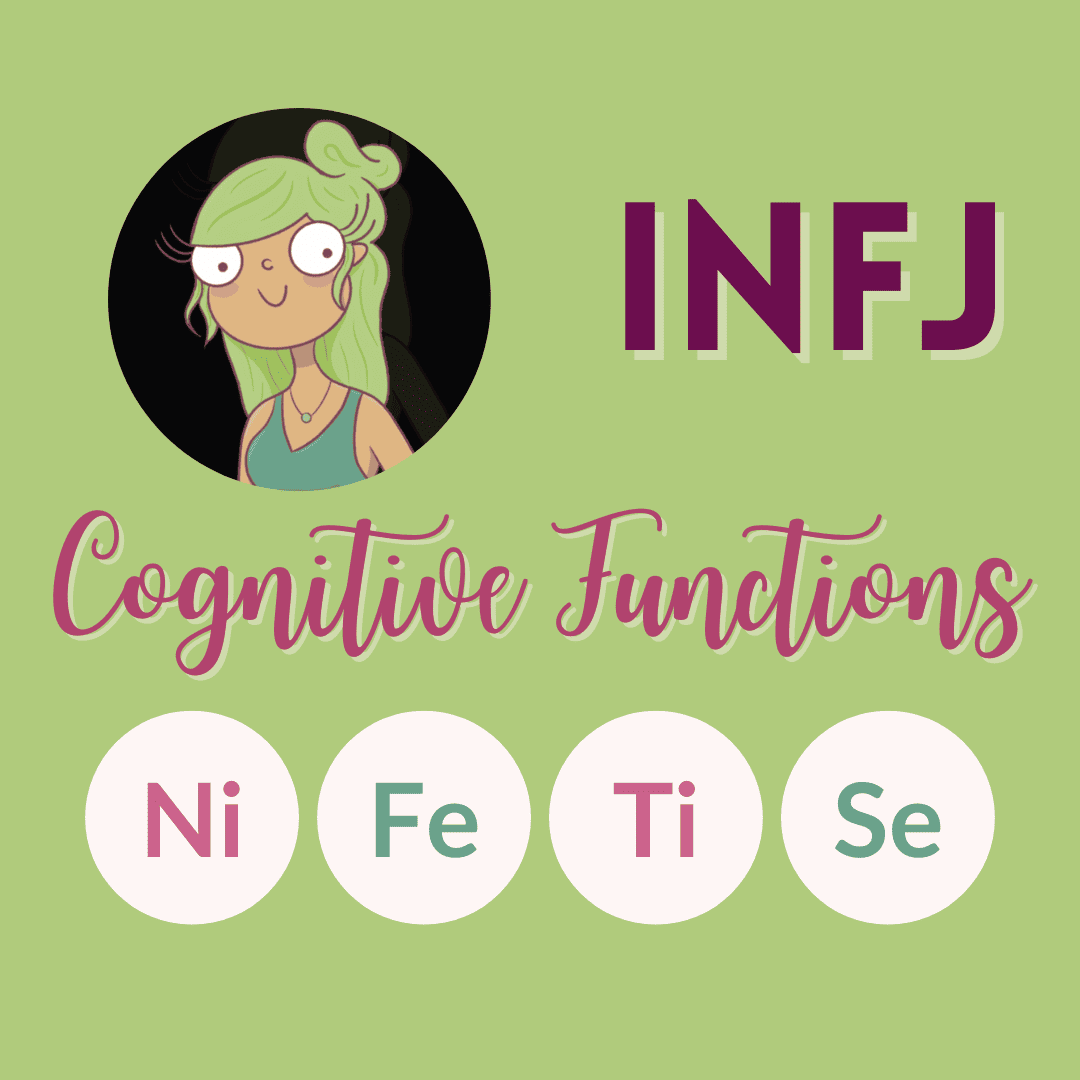
The INFJ Cognitive Functions Simplified
What are the INFJ Cognitive Functions?
In this article, you will learn how to easily understand the INFJ cognitive functions. Cognitive functions are the foundation of the MBTI personality types as Myers-Briggs simply is a type code based on Carl Jung’s theories on the 8 different cognitive functions that people use.
At the end of the article, you can learn a quick summary of what even is a cognitive function, a summary of the eight cognitive functions, and how the 16 types are categorized.
In a nutshell, a cognitive function is a mental process. You could think of them as muscle groups of the brain. Each cognitive function has certain strengths that develop over time as a result of repetitive use, similar to how a muscle gets stronger over time through exercising it frequently to build up its strength.
Each of the 16 personality types in MBTI has a “function stack” that orders the 8 cognitive functions in a specific order and reveals what strengths and weaknesses that type typically has.
The INFJ Personality Type
The INFJ personality type is known to be the rarest personality type of the 16 types, estimated at around ~1% of the population. Sometimes they are nicknamed the “Mystic”, “Sage”, or “Counselor.” Here I refer to them as the “Advocate“ personality type.

They are individuals who tend to be usually easy to get along with, good listeners, and full of unique insights. The INFJ personality type is often quirky with a rich inner world they keep secret to most.
Alright, let’s explore the INFJ cognitive functions to break down how this type typically functions as a result of which brain muscle groups INFJs tend to develop. You could think of these as an INFJ cognitive map.
What are the INFJ’s cognitive functions?
Quick Summary of the conscious four functions of INFJ personalities:
- Dominant Function Introverted Intuition (Ni)
- Auxiliary Function Extraverted Feeling (Fe)
- Tertiary Function Introverted Thinking (Ti)
- Inferior Function Extraverted Sensing (Se)
The first four functions are conscious, although the mental processes may sometimes still be unconscious, they have the full potential to become conscious in practice throughout one’s life. The dominant function strives for competence and mastery while welcoming challenges in a reliable way to serve as the “Hero.”
1st Dominant Function: Introverted Intuition (Ni)
The dominant cognitive function is a type’s lead function in its function stack. Also known as the “Hero” archetype, it is a cognitive function that the type uses automatically, easily, and comfortably. The dominant function strives for competence and mastery while welcoming challenges in a reliable way to serve as the “Hero.”

Introverted intuition (Ni) is an INFJ’s dominant cognitive function. This is a perceiving function that is very subconscious. It is analytical of trends over time, making the two types that lead with introverted intuition very adept at pattern recognition. The two types that lead with introverted intuition (Ni) are the INFJ Advocate and the INTJ Mastermind.
Introverted intuition can be a lonely dominant function to have, as it is uncommon in the population. If INFJs are 1-2% and INTJs are 2-4%, then introverted intuition is the rarest of the 8 cognitive functions. Both INFJ Advocate and INTJ Mastermind personality types could feel like weirdos and definitely have sensed from a young age that they just think differently in comparison to others.
With introverted intuition as the dominant function, they have a deep desire to understand principles and inevitable truths. They are naturally intuitive with an innate ability to envision predictions, see connections between events, and practice creativity. INFJs and INTJs love to explore ideas that have a complex nature to them. Their intuitive insights often surprise others in conversations.

From a young age, introverted intuition as the dominant function serves as a strong guiding force leading to the persistent pursuit of personal goals. INFJs and INTJs never have intentions to follow the group and instead always prefer to form their own paths in life. Introverted intuition comes in as the “Hero” to these types to clarify the right next decision. When INFJs decide they want a certain outcome, they become target-locked to their goal.
In this book, introverted intuition is noted to enter into the state of flow through problem-solving. Both INFJs and INTJs can be amazing innovative problem solvers, although they are of course wrong sometimes.
2nd Auxiliary Function: Extraverted Feeling (Fe)
The auxiliary cognitive function is a type’s second function in its function stack. Also known as the “Parent” archetype, it is a cognitive function that the type performs to protect and support others. The auxiliary function serves to develop other people and acts as a role model.
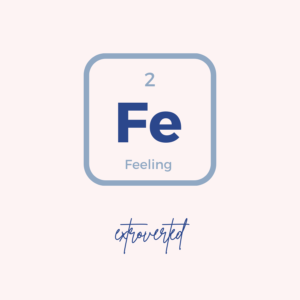
Extraverted feeling (Fe) is an INFJ’s auxiliary function. Generally speaking, extraverted feeling makes a type adaptively aware of other people’s feelings. Additionally, extraverted feeling makes promoting a socially harmonious atmosphere a priority. People who use extraverted feeling dominantly tend to come off to others as quite warm and sweet.

As the auxiliary function, extraverted feeling (Fe) may lead INFJs (and ISFJs) to be mistaken for extroverts from time to time. When they are comfortable, these personality types can exude a very bubbly and outgoing persona that contradicts their true introverted nature. In the auxiliary position, extraverted feeling is arguably the most parent-like of the cognitive functions. Extraverted feeling has good intentions and usually strives to serve others in a genuine manner by taking into account other people’s emotions.
3rd Tertiary Function: Introverted Thinking (Ti)
The tertiary cognitive function is a type’s third function in its function stack. Also known as the “Eternal Child” archetype, it is a cognitive function that the type admires in others and needs in order to balance the influence of the parent functions of others. The tertiary function is sometimes creatively original but can be a little unstable and unreliable.

An INFJ’s tertiary function is introverted thinking (Ti). For INFJ (and ISFJ), their introverted thinking is used innocently in its “child” position. Introverted thinking enjoys logical thinking, sometimes for the intellectual enjoyment of understanding something. Introverted thinking (Ti) pursues truth and logical conclusions in a pure manner.
In comparison to extroverted thinking (Te) which is focused on HOW to get something done efficiently, introverted thinking (Ti) focuses on WHY something works or is needed. The introverted thinking function enjoys learning for the sake of learning, even if there is not always a directly applicable purpose in the outside world.

Lastly, I would argue that INFJs are as much thinkers as they are feelers because introverted thinking is their tertiary cognitive function. (In the same way, I would say INTJs are as much feelers as they are thinkers.) INFJs might be better at using extraverted feeling (Fe) with that one higher in their function stack, but they can more willingly tap into their tertiary introverted thinking (Ti) as an introvert.
4th Inferior Function: Extraverted Sensing (Se)
The fourth function is the inferior cognitive function. Also known as archetypes of the “Anima” (in women) and “Animus” (in men), and it is sometimes referred to as the “aspiration” of a type. This one in a person’s function stack indicates what mission or higher cause a type is working towards and can serve as an important tool to transform one’s self. Notably, this function tends to be weak and underdeveloped in the first half of life. However, it is a gateway to help one’s personality blossom later in life.

The inferior function of extraverted sensing (Se) leads to INFJs admiring extraverted sensing in others as they aspire to develop such confidence in themselves. The inferior function has a seductive draw to it because it is an important key to personal growth for a personality type.
Extraverted sensing is a highly responsive cognitive function that adapts in real-time to the external world in the present moment. This extraverted function can quickly gather sensory information from the outside world to make decisions. Extraverted sensing enjoys experiencing new things, interacting with the outer environment, and indulging in sensual pleasures and creative arts.
Extraverted sensing (Se) is the opposite of introverted intuition which takes place primarily in the mind. Inferior extraverted sensing offers a healthy balance to INFJ cognitive overthinking habits that result from both their dominant (introverted intuition) and tertiary (introverted thinking) cognitive functions.

INFJs will need to actively work on developing their extraverted sensing in a healthy productive way as it is the weakest of their primary functions. Because of this inferior function, this personality type may be vulnerable to sensory overload when they feel overwhelmed by an overfocus on real-world details.
To be honest, inferior extraverted sensing is a slightly dangerous placement. Extraverted sensing has an impulsive nature to it, which is a force in the physical world. As the inferior cognitive function, extraverted sensing can have a grip (also known as a “Se-grip”) on an INFJ leading to poor self-control and regretful decisions. You could read more about the dark side and unexpected toxic traits of an INFJ in this post, where I walk through how each of the INFJ cognitive functions can go dark.
INFJ Shadow Functions
After the primary functions, there are the lower four cognitive functions are considered shadow functions that are mostly unconscious with a repressed aspect to them. The shadow functions are the same function as the first four functions, with the opposite attitude such that introverted intuition (Ni) becomes extroverted intuition (Ne) for example.
Quick Summary of the unconscious four functions of the INFJ cognitive function stack:
- 5th Extraverted Intuition (Ne) – Opposite Personality
- 6th Introverted Feeling (Fi) – Critical Parent
- 7th Extraverted Thinking (Te) – Blindspot
- 8th Introverted Sensing (Si) – Demon
5th Nemesis Function: Extraverted Intuition (Ne)
Extraverted iNtuition (Ne) is a beautiful expansive cognitive function that likes to intellectually explore in a similar but different way than introverted intuition. (Ne) likes to expand, while (Ni) likes to distill to core principles. The 5th function is a source of worry for a type, so extraverted intuition (Ne) in the 5th placement makes INFJ worrisome human beings when their inner world becomes rich instead with pessimistic thinking.

6th Critical Parent Function: Introverted Feeling (Fi)
As a critical parent, introverted feeling limits acceptance of personal values and prioritize other people’s feelings. However, this can be outgrown through the maturation of self-acceptance and learning how to practice introverted feeling over their auxiliary extraverted feeling function. INFJs (and ISFJs) need to clarify their own thoughts without the influence of considering other people’s emotions.
7th Trickster Blindspot Function: Extraverted Thinking (Te)
Extraverted thinking (Te) as a blindspot is tough because it results in a devaluation of this function. In reality, extraverted thinking serves a very real productive purpose in the world to accomplish goals. Extraverted thinking (Te) is systematic, efficient, and action-oriented in a results-focused way.
Arguably this is the weakest of the 8 functions in an INFJ’s cognitive functions because it is the opposite attitude (extroverted) of this personality type.
8th Demon Function: Introverted Sensing (Si)
Introverted sensing (Si) is characterized by a strong sense of duty, reliability (such as routine), a focus on details, and a powerful memory that uses the past as a trusted source of guidance. Introverted intuition and introverted sensing are direct opposites, as introverted intuition (Ni) focuses on the future and the big picture while introverted sensing (Si) focuses on the past and the small details.

The Demon function for a personality type is a source of conflict that tends to undermine the importance of its place in functioning. Types that lead or have dominant use of the function can be a trigger for the type if extensive time is spent with those types.
You could read more about how an INFJ can be toxic in this post, where I walk through how each of the INFJ cognitive functions and shadow functions can be used in unhealthy ways.
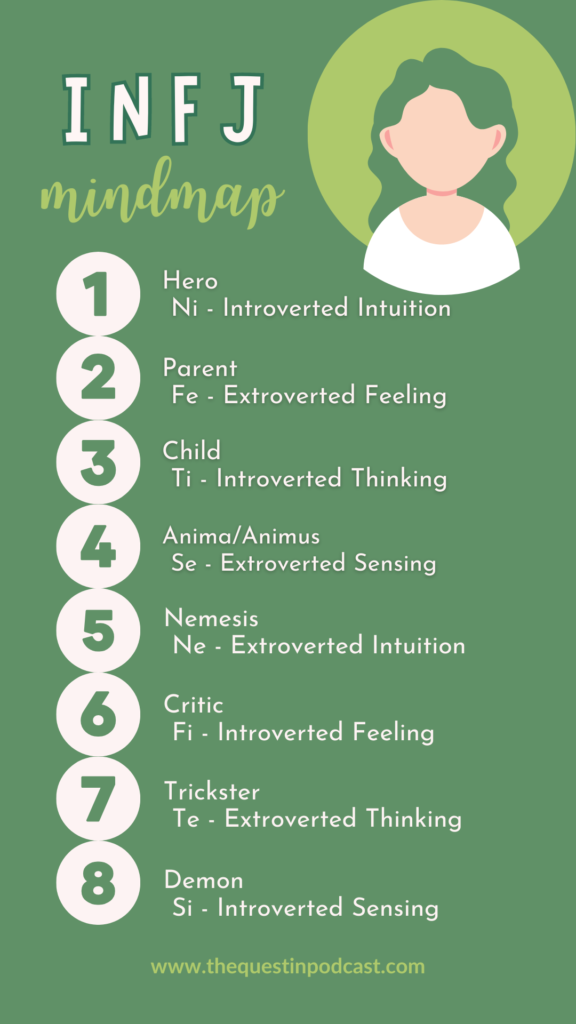
What even is a cognitive function? (Theory developed by Carl Gustav Jung)
Carl Jung was a Swiss psychiatrist and psychoanalyst. Through his clinical work, he recognized and identified different “cognitive functions” that people use. You could think of cognitive functions as mental processes that flavor a personality type with distinguishable strengths and weaknesses.
The Eight Cognitive Functions (Quick Summary)
8 Functions Total = 2 types x 2 functions x 2 (introverted or extroverted)
Two Types of Functions: Judging & Perceiving (2)
- Judging Functions: how you make decisions
- Perceiving Functions: how you intake information
There are two functions for each type of function. (2 x 2 = 4)
Judging Functions
- Feeling (F)
- Thinking (T)
Perceiving Functions
- Sensing (S)
- Intuition (N)
Two Types of Attitudes for a Function: Introverted or Extroverted (2 x 2 x 2 = 8)
- Judging function: Feeling + Introversion = Introverted Feeling (Fi)
- Judging function: Feeling + Extroversion = Extraverted Feeling (Fe)
- Judging function: Thinking + Introversion = Introverted Thinking (Ti)
- Judging function: Thinking + Extroversion = Extraverted Thinking (Te)
- Perceiving function: Sensing + Introversion = Introverted Sensing (Si)
- Perceiving function: Sensing + Extroversion = Extraverted Sensing (Se)
- Perceiving function: Intuition + Introversion = Introverted Intuition (Ni)
- Perceiving function: Intuition + Extroversion = Extraverted Intuition (Ne)
Each Personality Type in the MBTI Personality Framework
Each type has a different unique order of cognitive functions in its function stack. The first four are conscious primary and inferior functions. This article was 1 of the 16, outlining the INFJ cognitive functions.
The eight cognitive functions are all paired on axes, so once you know the top two cognitive functions of a type then you know the order of all 8. An axis is made up of two functions that are connected because if you introvert one, then you must extrovert the other and vice versa. The four axes are:
- Ni-Se Axis (introverted intuition & extraverted sensing) – both perceiving functions
- Ne-Si Axis (extraverted intuition & introverted sensing) – both perceiving functions
- Fe-Ti Axis (extraverted feeling & introverted thinking) – both judging functions
- Fi-Te Axis (introverted feeling & extroverted thinking) – both judging functions
The first four functions are conscious, while the lower four are unconscious shadow functions. Shadow functions are usually undeveloped, use unconsciously, and have a repressed aspect to them.






